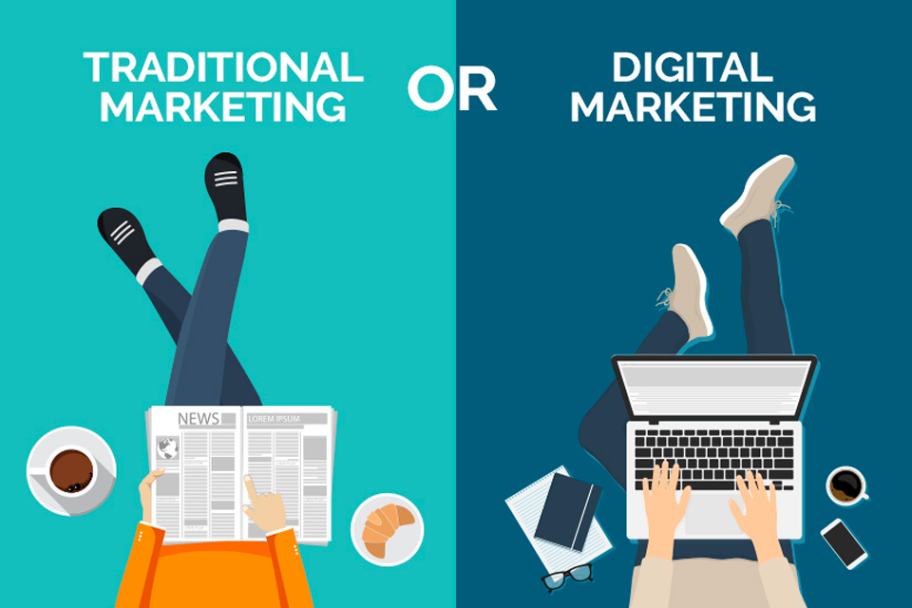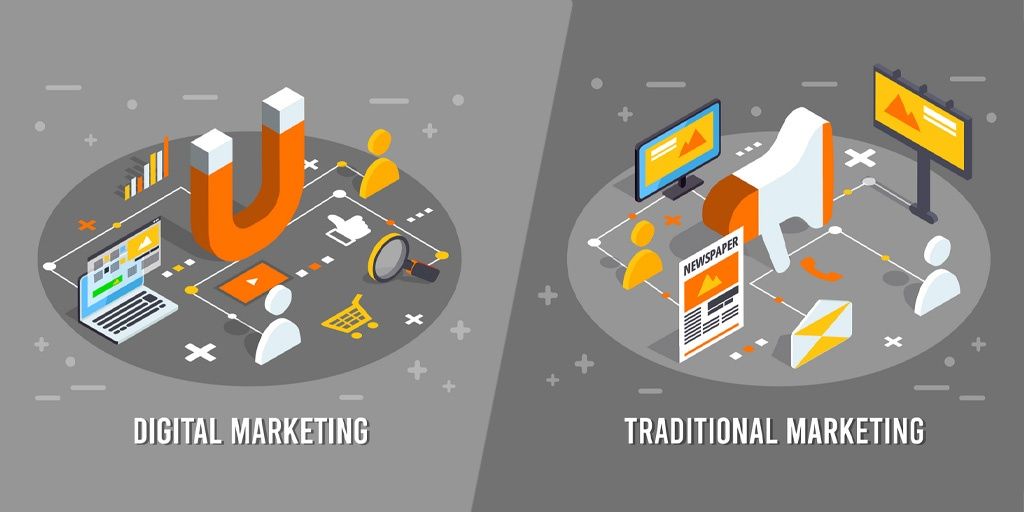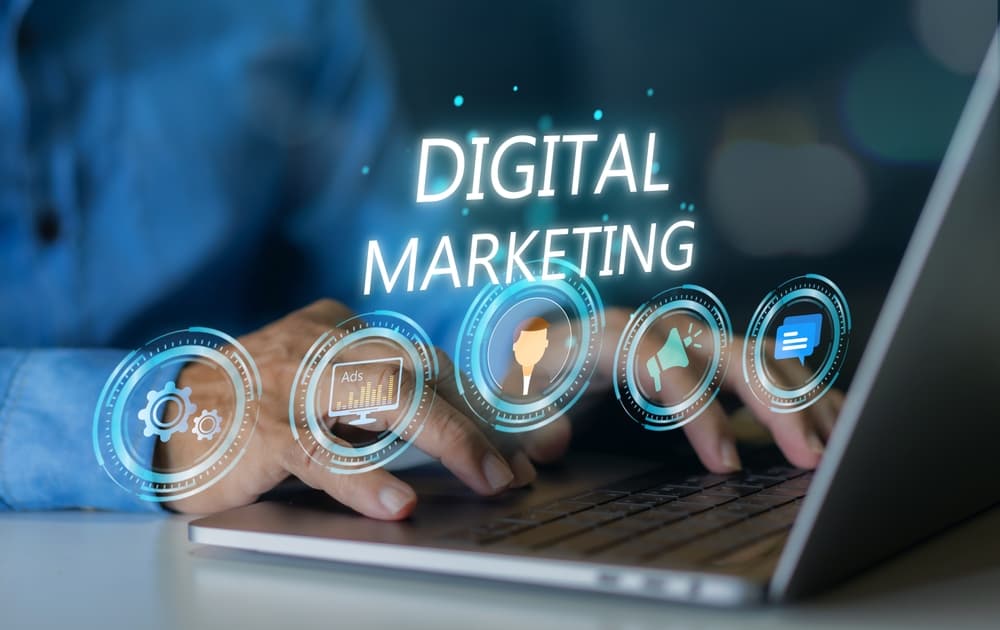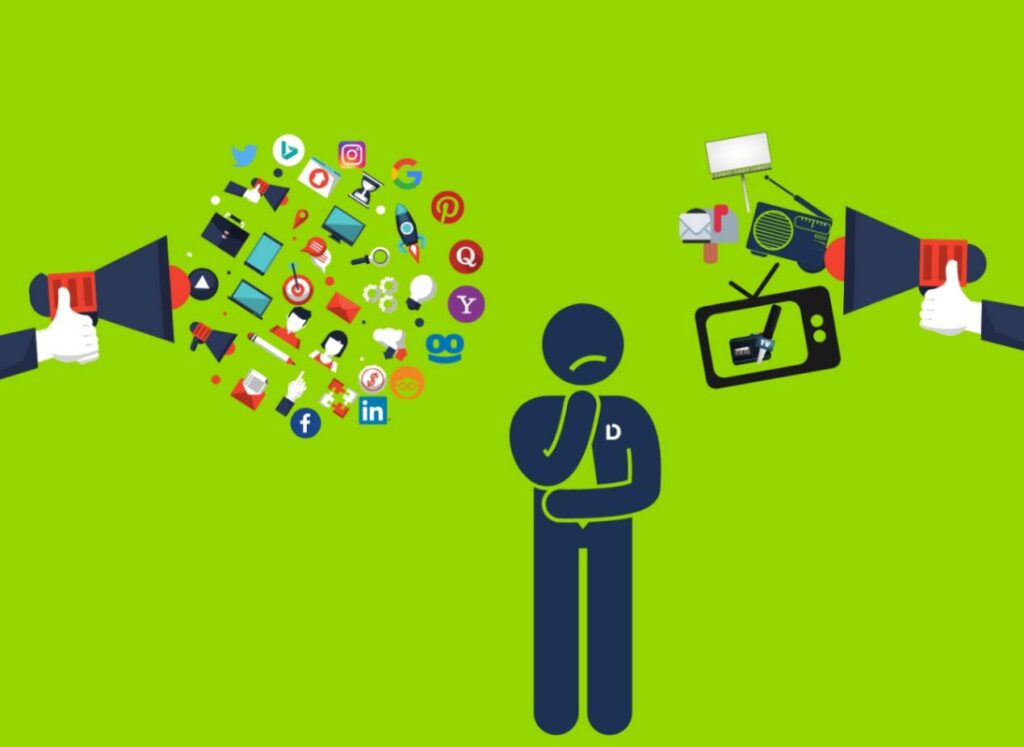In today’s fast-paced world, businesses are increasingly seeking the most effective ways to reach their audiences. One of the most discussed topics in the world of advertising and promotion is the comparison between traditional and digital marketing. With rapid technological advancements, the shift in marketing strategies has been significant, raising the question: which approach is more effective in today’s dynamic business landscape?
In this blog, we will explore the differences, advantages, and disadvantages of traditional and digital marketing, and understand why digital marketing is leading in the modern era.
Understanding Traditional and Digital Marketing
Before diving into comparisons, it’s crucial to understand what both forms of marketing entail.

Traditional Marketing
Traditional marketing refers to any form of marketing that is not conducted online. Print advertising (newspapers, magazines), broadcasting (TV, radio), direct mail, telemarketing, and outdoor advertising (billboards, flyers, posters) are all examples.
This approach has been in use for decades and has established a strong foundation for brand awareness and customer loyalty.
Digital Marketing
Digital marketing encompasses all marketing efforts that use an electronic device or the internet. It includes social media marketing, search engine optimization (SEO), content marketing, email marketing, pay-per-click advertising (PPC), influencer marketing, and more. The core strength of digital marketing lies in its ability to engage with the audience in real-time and its data-driven approach.
Key Differences Between Traditional and Digital Marketing

Let’s explore how traditional and digital marketing differ in terms of approach, reach, engagement, and effectiveness.
1. Audience Reach and Targeting
Traditional marketing generally has a broader, more generalized reach. It targets mass audiences without much segmentation. For instance, a TV commercial will be seen by a wide range of viewers, regardless of whether they are potential customers.
Digital marketing, on the other hand, offers precise targeting options. Marketers can define their audience based on demographics, interests, online behavior, location, and more. This targeted approach often results in higher conversion rates.
2. Cost Effectiveness
When comparing traditional and digital marketing, pricing is a key factor. Traditional marketing initiatives, particularly those conducted on television, radio, or in print, can be substantially more expensive.There’s also the recurring cost of printing materials or buying ad space.
Digital marketing, however, is generally more cost-effective. Even small businesses can launch successful campaigns with limited budgets. Tools like email marketing or social media advertising allow marketers to reach thousands without breaking the bank.
3. Interaction and Engagement
One major limitation of traditional marketing is the lack of interaction with the audience. It’s a one-way communication channel where the message is delivered without expecting immediate feedback.
Digital marketing thrives on two-way communication. Brands can engage with their audience in real-time through comments, messages, polls, and live sessions. This enhances customer experience and builds a stronger connection between the brand and the consumer.
4. Measurability and Analytics
Traditional marketing often struggles with measurability. It’s difficult to track how many people saw a billboard or responded to a newspaper ad unless there’s a coupon or direct response involved.
In contrast, digital marketing offers detailed analytics. Marketers can track every click, impression, conversion, and customer journey using tools like Google Analytics, Facebook Insights, or HubSpot. This data-driven strategy allows organizations to optimize their strategies in real time.
5. Speed and Flexibility
Traditional marketing campaigns require extensive planning and execution time. For example, developing a TV commercial involves scripting, filming, editing, and securing air time, which can take weeks or months.Digital marketing offers speed and flexibility. Campaigns can be launched within hours, and changes can be made instantly if the strategy isn’t yielding the expected results.
Why Digital Marketing is Leading Today

The growing dominance of digital platforms has changed the way consumers interact with brands. Let’s explore the reasons why digital marketing is leading the way in the battle between traditional and digital marketing.
1. Mobile and Internet Penetration
With over 5 billion internet users globally and smartphones becoming a necessity, digital marketing has become the go-to strategy. Consumers are online more than ever before, and businesses must meet them where they are. This shift has tilted the scales in favor of digital marketing.
2. Personalization and Automation
Digital marketing allows personalized communication. Emails, advertisements, and recommendations can be customized based on a user’s preferences or past behavior. Automation tools make it easier to nurture leads, send timely messages, and manage campaigns efficiently—features not possible with traditional methods.
3. Real-Time Results
In the fight between traditional and digital marketing, real-time performance is a significant advantage for digital marketing.Brands can monitor campaign performance on the go, adjust strategies, and even stop underperforming ads immediately—something traditional platforms lack.
4. Social Media Influence
Social media has revolutionized how brands interact with their audience. Platforms like Instagram, Facebook, LinkedIn, and Twitter are powerful marketing channels that allow content sharing, live updates, influencer partnerships, and more. This level of interaction was never possible with traditional advertising methods.
Pros and Cons of Traditional Marketing
Pros:
- Wider Local Reach: Ideal for local audiences who may not be digitally active.
- Credibility: Printed and broadcasted content often feels more trustworthy to some customers.
- Tangible Materials: Physical marketing (brochures, business cards) can be kept and revisited.
Cons:
- High Costs: Printing, broadcasting, and distribution involve heavy expenses.
- Limited Tracking: Difficult to measure ROI and campaign performance.
- One-Way Communication: Minimal interaction with the audience.
- Slow Execution: Takes longer to plan and launch campaigns.
Pros and Cons of Digital Marketing
Pros:
- Cost-Effective: Budget-friendly options for businesses of all sizes.
- Data-Driven: Real-time analytics and performance tracking.
- Wider Reach: Global audience access through various digital platforms.
- Interactive: Facilitates two-way communication and engagement.
- Personalization: Tailored messaging and customer journeys.
Cons:
- Ad Fatigue: Oversaturation of ads can annoy users.
- Technical Skills Required: Marketers need knowledge of tools, platforms, and SEO.
- Constant Evolution: Rapid changes in algorithms and trends require continuous adaptation.
- Privacy Concerns: Consumer data handling raises concerns over privacy and security.
Which One Should You Choose?

When it comes to choosing between traditional and digital marketing, the decision depends on your business goals, target audience, and budget. For instance, a luxury brand may benefit from a high-quality print campaign in elite magazines, while a tech startup may find success through Instagram reels and influencer partnerships.
In most cases, an integrated marketing approach—combining the strengths of both traditional and digital marketing—delivers the best results. This ensures a wider reach, strong brand credibility, and personalized customer engagement.
Conclusion
The marketing landscape has undergone a radical transformation over the past two decades. While traditional marketing continues to play a role, especially in local and older demographics, the rise of digital marketing is undeniable. It offers flexibility, efficiency, and real-time engagement, making it the preferred choice for modern businesses.
As businesses evolve, the need for a balanced understanding of both traditional and digital marketing becomes crucial. The future lies in leveraging the best of both worlds to craft compelling, results-driven campaigns.
Whether you are a startup or an established enterprise, investing in digital marketing is no longer optional—it is essential for staying competitive and relevant in the digital age.

